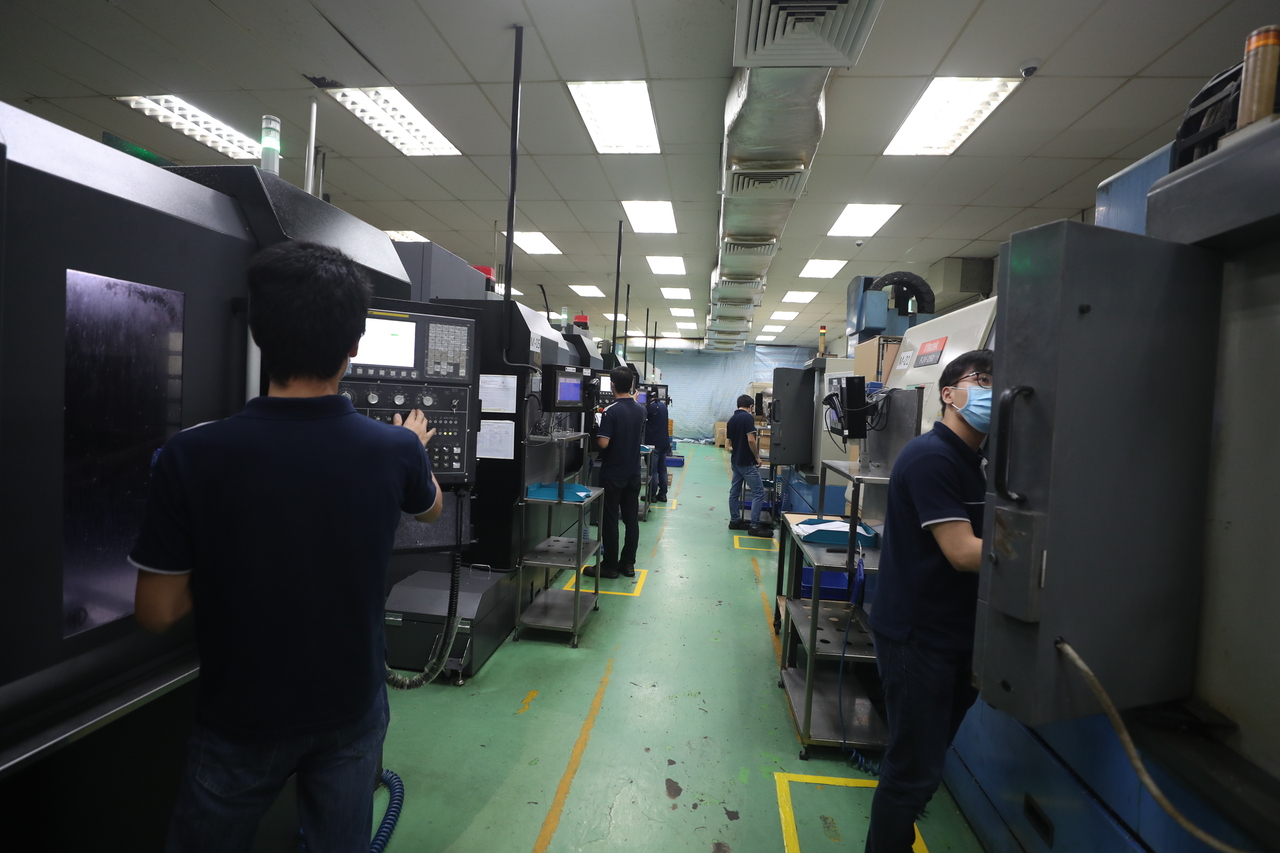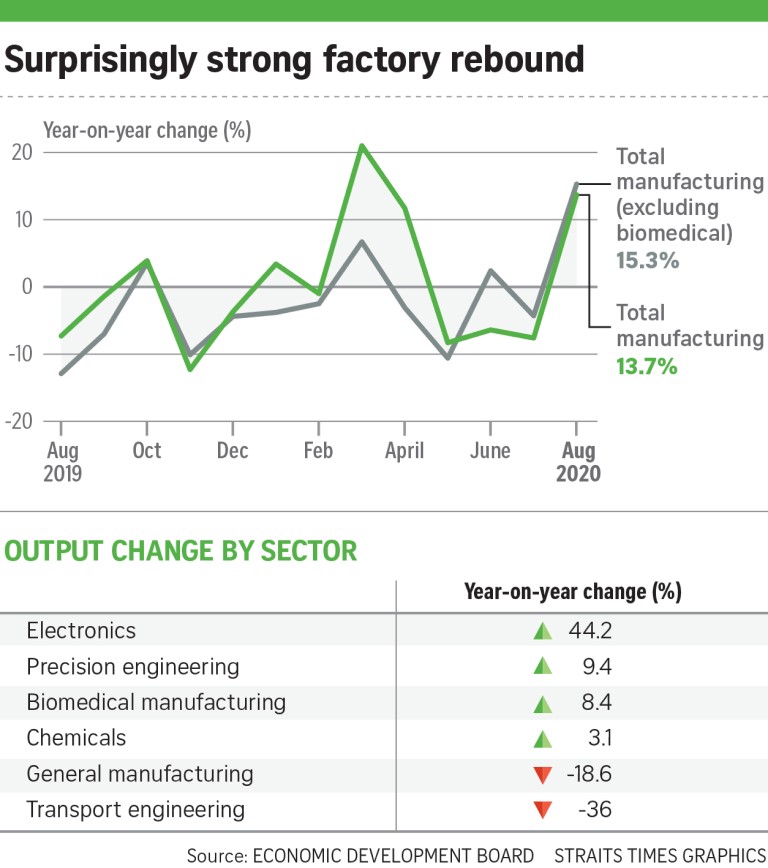Singapore factory output ends slumber with 13.7% growth
Semiconductor production surge, biomedical rally in August help put a stop to three-month decline
Sign up now: Get ST's newsletters delivered to your inbox

The semiconductor segment has grown 11.2 per cent over the first eight months of 2020.
ST PHOTO: TIMOTHY DAVID
Follow topic:
Singapore's manufacturing rebounded with a vengeance last month to end a three-month slump, thanks to strong growth in semiconductor production and a rally in the volatile biomedical segment.
Factory production grew a surprisingly strong 13.7 per cent over the same period a year ago, data from the Economic Development Board showed yesterday.
Output rose 15.3 per cent if biomedical output is excluded.
The bounce-back in last month's readings beat economists' expectations and followed a revised 7.6 per cent decline in July's factory output.
United Overseas Bank economist Barnabas Gan noted that key reasons for the output surge last month were a relatively low base from last year, and demand for biomedical goods, digital solutions and semiconductor equipment.
Production in the key electronics cluster surged 44.2 per cent over August last year.
A 56.9 per cent leap in chip output was supported by demand from cloud services, data centres and the 5G market, which outweighed declines in info-communications and consumer electronics, as well as computer peripherals and data storage segments.
The electronics cluster output has increased 4.1 per cent so far this year compared with the same period last year.
Maybank Kim Eng economists Chua Hak Bin and Lee Ju Ye said: "Manufacturing has been resilient in this pandemic recession, with supply chains and trade flows facing only temporary disruptions.
"Singapore's manufacturing sector has escaped recession in this downturn, in contrast to the past three recessions."
They forecast that factory production will remain positive for the rest of the year, with robust demand for semiconductors and IT equipment continuing to drive growth.

"However, downside risks for manufacturing include an intensifying United States-China tech war, which could disrupt global supply chains, and a winter Covid-19 wave, which may force more countries to revert to lockdowns," Dr Chua and Ms Lee noted.
The volatile biomedical manufacturing segment rebounded from July's 24.3 per cent contraction to record an uptick of 8.4 per cent last month. This was due to higher export demand for medical instruments and increased output in biological products.
It has been Singapore's best-performing manufacturing segment this year, with an 18 per cent improvement over last year.
On the other hand, transport engineering output plunged 36 per cent last month, compared with the same period last year, and is down 22.2 per cent so far this year.
The impact from the pandemic sent the aerospace segment down 34 per cent, while marine and offshore engineering dived 50.7 per cent.
The transport engineering cluster has shrunk 22.2 per cent so far this year.
OCBC Bank head of treasury research and strategy Selena Ling said growth in both the overall manufacturing industry and the key electronics segment bodes well for Singapore's recovery in the months ahead.
She noted that manufacturing's overall growth last month was the highest year-on-year expansion since March, while the electronics surge was the cluster's largest since October 2017.
"Our sense is that the uptick in the global electronics demand will likely sustain in the coming months as this improvement trend is apparent across other key regional manufacturing hubs, including Taiwan and South Korea," she said.

